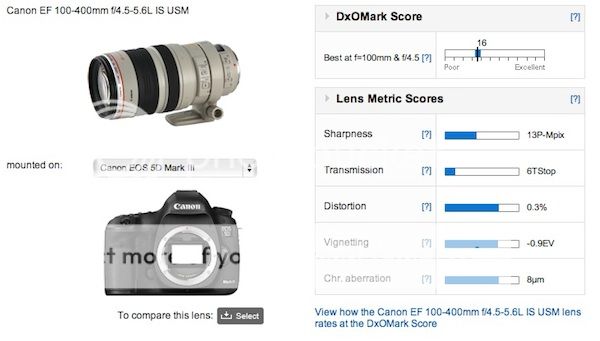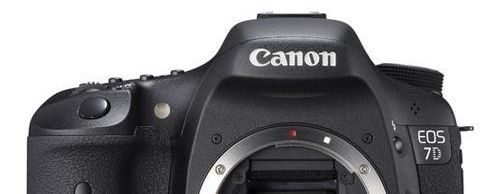Follow us:
Deal: Canon 600EX-RT Speedlite Flash – $469 (Amazon)
Amazon US has the Canon 600EX-RT Speedlite Flash on sale for $469 (price shows up when the item is added to the cart). Product description after the break.
Follow us:
Amazon US has the Canon 600EX-RT Speedlite Flash on sale for $469 (price shows up when the item is added to the cart). Product description after the break.
| Top Rated Plus seller 6ave (99.2% positive ratings) on eBay has the Canon EF 24-105mm f/4L IS lens . Free shipping and limited quantity. |
Product description after the break.

Canon’s Digital Learning Center published a long article about auto-focus microadjustement, a useful feature you find on Canon’s higher level DSLRs, and a feature that was thankfully re-introduced to the xxD line-up with the Canon EOS 70D.
From the introduction:
What does AF Microadjustment do?
It allows the user to command the camera to intentionally shift the sharpest focus either in front of or behind where it’s factory-set. The extremely precise AF system in a digital SLR is designed to read contrast at the subject, calculate how to drive the lens to focus sharply on the subject, and confirm sharp focus once the lens has stopped. With AF Microadjustment, the user is changing the data coming from the AF system, and asking it to move the lens farther in one direction or the other whenever it has to read and calculate sharp focus.The adjustments applied using this control are based on the depth-of-field you’d have at a lens’s maximum aperture. They are not based on the lens’s focal length! When setting the Microadjustment, you’ll see a scale on the camera’s LCD monitor with up to + or – twenty steps. Each step is a very fine increment, equal to 1/8th of the depth-of-field you’d have with the current lens wide-open. And that 1/8th of the depth of field is only moving forward (toward the camera) or back (toward the background) from the sharpest plane of focus. The main thing to remember here is that these are very fine increments. Don’t expect radical shifts in focus with adjustments like plus 3 or minus 5.

DxOMark felt the pulse of another well known Canon work-horse lens, the Canon EF 100-400mm f4.5-5.6L IS (price & specs). They say it is “still a good all-round choice”.
In the conclusion they write:
Without doubt this lens is a popular model and it’s not difficult to see why. It has pretty good image quality throughout the range – though sharpness is confined to a relatively small area centrally at the initial aperture. Edge performance improves when stopped down but it’s not ideal where shooting in available light is usually the only option.
A new updated version is long overdue but when it arrives will likely have improved full aperture performance and a ticket to match, but for the time being this lens is competitively priced and remains a solid choice.
The Canon EF 100-400mm f4.5-5.6L IS is on sale for $1559 at major US resellers (price shows up after added to cart): B&H Photo, Adorama, Amazon USA, Amazon Canada, Canon Canada, Canon USA.
Canon press release:
Canon earns highest ranking among Japanese companies in 2013 Climate Counts science-based corporate emissions performance study
TOKYO, January 30, 2014—Canon Inc. announced today that, in a collaborative study on corporate emissions performance conducted by Climate Counts1 and the Center for Sustainable Organizations,2 Canon earned a fourth-place ranking, the highest of any Japanese company included in the survey.
The 2013 Climate Counts Science-Based Carbon Study analyzes the operational emissions of 100 global corporations between 2005 and 2012 to determine their performance against science-based targets. The companies included in the study spanned 10 industries, including technology, healthcare, oil & gas, and consumer goods. The study relies on a metric developed by the Center for Sustainable Organizations (CSO) called the Context-Based Carbon Metric.3 Embedded in CSO’s metric for purposes of the Climate Counts study were science-based emissions targets developed by Tellus Institute, an interdisciplinary not-for-profit research and policy organization.
The study evaluates sustainability performance not only in terms of the environment, but also from social and economic perspectives, assessing and ranking each company’s performance based on emissions per dollar of contribution to gross domestic product, as well as the amount that the company contributes to GDP.

A new rumor concerning the EOS 7D replacement surfaced. The rumor states that the replacement for the Canon EOS 7D (price & specs) will be announced in Q2 and released to the pubic in Q3 2014. And: The moniker EOS 7D Mark II appears to be back into the game.
It is suggested that a “lot of upcoming Canon camera kit (lenses, cameras and video) has been sent to Sochi” to be tested (as prototypes) during the Winter Olympics. Demo events for selected top customers should also be on the plan. And finally: “It was also mentioned that quite a few aspects of functionality were still ‘up for grabs’ and that any specs leaked out over the next month or two would still be very provisional“.
We heard contrasting rumors in the last month about the 7D replacement. I have been told that there will is no EOS 7D Mark II on the horizon, though a 7D replacement (read: a new APS-C flagship) is in the works but will come with a new name. I think that it can be taken for granted that there will be a new APS-C flagship. But for the time being we know very little. It could be rumored EOS-A1 with hybrid viewfinder.
Say tuned for more.
[via NL]Notice
This website or its third-party tools use cookies, which are necessary to its functioning and required to achieve the purposes illustrated in the cookie policy. If you want to know more or withdraw your consent to all or some of the cookies, please refer to the cookie policy.
By closing this banner you agree to the use of cookies.